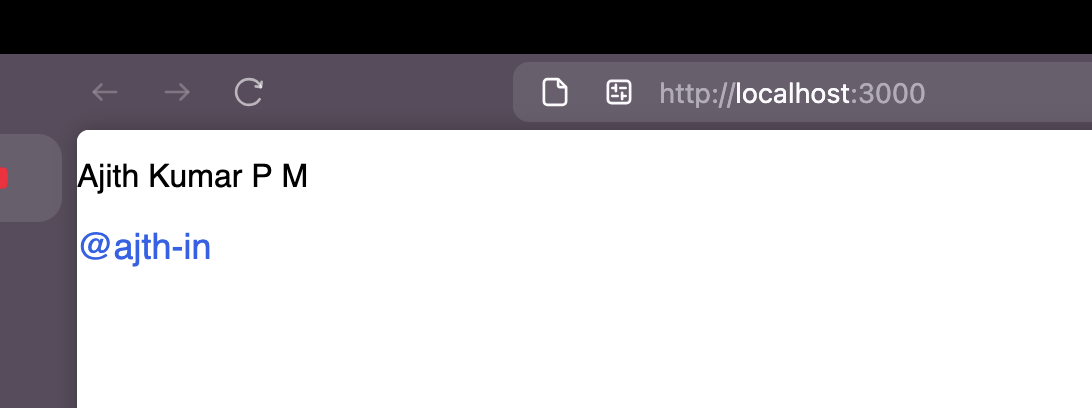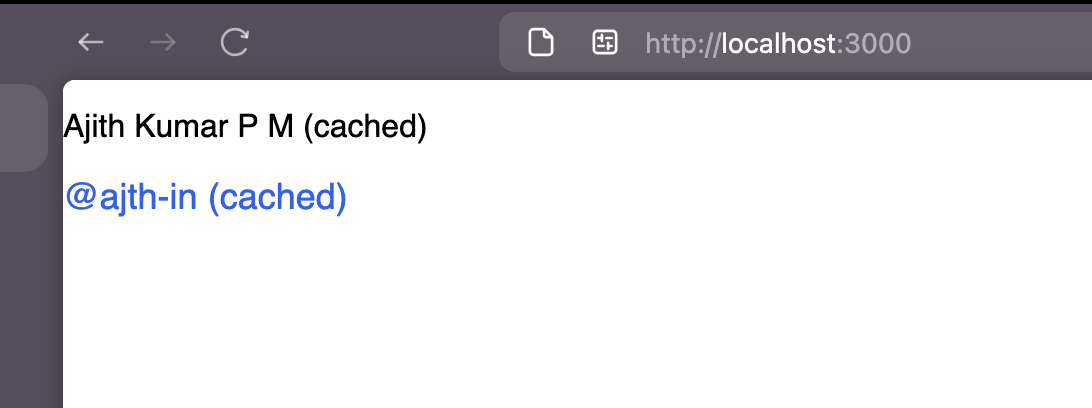Loading...

Mock Client-side & Server-side API Requests Using Next.js and MSW.js
There are a bunch of situations where mocking API requests can really come in handy. Maybe you’re...
2 reactions
1 comments
#nextjs#msw#testing#webdev
There are a bunch of situations where mocking API requests can really come in handy. Maybe you’re building out features without a backend yet, trying to avoid hitting a third-party API too often, or just want things to work offline.
Mocking used to be pretty straightforward when everything was happening on the client side. But things changed with modern React. With support for data fetching on the server, API requests can now come from both the server and the client.
So how do you mock both client-side and server-side API calls without writing two completely different sets of mocks?
That’s where MSW (Mock Service Worker) comes in. It’s honestly one of the best tools out there for this job.
MSW lets you mock API requests at the network level:
👉 github.com/ajth-in/nextjs-mswjsLet’s look at a simple example that fetches user information from the GitHub API. This will demonstrate both server-side and client-side fetching, which we’ll later mock using MSW.
This is a React Server Component that fetches user data during server-side rendering. It then renders a client component (
This is a Client Component that also fetches the same user data from GitHub, but on the client side using  The user information is being fetched live from the GitHub API, both on the server and the client.
The user information is being fetched live from the GitHub API, both on the server and the client.
Now let’s mock the GitHub API call we used earlier. We’ll return a static user response from a local JSON file.Start by creating a file at:And add the following mock response:The "(cached)" part is just there to help us verify that the mock is being used when the app runs.
Now we’ll create an MSW handler to intercept the GitHub API request and respond with our mock data.In this example, we’re intercepting all requests that match the pattern
This sets up the mock server for handling requests in the Node.js environment (used during SSR or in API routes):
This sets up the Service Worker that intercepts requests on the client side:To hook MSW into our Next.js app, we’ll use Next.js instrumentation hooks. These allow you to run setup code during the server's startup lifecycle.
Create a file at the root of your app directory named Here’s what this does:For client-side mocking, MSW uses a Service Worker to intercept requests in the browser. First, we need to generate the This will generate a
This component is what we'll use to load the Mock Service Worker (MSW) into our app during development or testing.Basically, this waits until the mock worker is fully set up before rendering anything. That way, your app won't accidentally fire off real network requests before the mocks are ready.To make this work across your entire app, just wrap your layout with it.
Now if you restart the dev server, you should see your app serving mocked responses right away. So that’s it — we’ve successfully mocked API calls from both the server and the client side. 🎉Since both environments share the same set of handlers, we don’t need to worry about where a particular request is coming from. Whether it runs on the server during SSR or from the browser after hydration, our mocks stay consistent.
So that’s it — we’ve successfully mocked API calls from both the server and the client side. 🎉Since both environments share the same set of handlers, we don’t need to worry about where a particular request is coming from. Whether it runs on the server during SSR or from the browser after hydration, our mocks stay consistent.A Note on
One more thing worth mentioning: just like we used
- On the client, using a Service Worker (
msw/browser) - On the server, using an intercepting server (
msw/node) that works well for SSR and API routes
Setting Up MSW in a Next.js App
You can find the full working example here:👉 github.com/ajth-in/nextjs-mswjs
Install MSW
Install MSW as a dev dependency:bash
Set Up the Folder Structure
Next, create amocks directory at the root of your project. This will hold everything related to MSW, including handlers and setup files for both the browser and Node.js environments.Here’s the structure:text
app/page.tsx
This is a React Server Component that fetches user data during server-side rendering. It then renders a client component (GithubUserName) and also displays the user’s GitHub login directly.tsx
components/UserName.tsx
This is a Client Component that also fetches the same user data from GitHub, but on the client side using useEffect. Instead of showing the login, it displays the user’s full name.tsx
💡 Note:If you start the development server at this point, you'll see something like this:
The client-side fetching here is redundant. Since the same user data is already available on the server, it could be passed as a prop to the client component. We're doing it this way purely to demonstrate both client-side and server-side mocking with MSW.

mocks/data/github-user.json
Now let’s mock the GitHub API call we used earlier. We’ll return a static user response from a local JSON file.Start by creating a file at:text
json
mocks/handlers.js
Now we’ll create an MSW handler to intercept the GitHub API request and respond with our mock data.tsx
https://api.github.com/users/*. If you want to target a specific user or URL, you can provide the exact match instead.*mocks/node.js
This sets up the mock server for handling requests in the Node.js environment (used during SSR or in API routes):ts
mocks/browser.js
This sets up the Service Worker that intercepts requests on the client side:ts
🛠️ From the Next.js documentation:We’re going to use this hook to spin up our mock server.
"Instrumentation is the process of using code to integrate monitoring and logging tools into your application. This allows you to track the performance and behavior of your application, and to debug issues in production."
instrumentation.ts
Create a file at the root of your app directory named instrumentation.ts and add the following:ts
NEXT_RUNTIME === 'nodejs'ensures we only run this in the Node.js runtime (not in the Edge runtime).NEXT_PUBLIC_MSW_ENV === 'test'lets us control when to enable MSW. This way, mocks are only active in testing or development environments.
⚠️ Note:
This example uses Next.js version 15.3.5.
Depending on your version, you might need to enable the instrumentation hook explicitly in your config:
ts
mockServiceWorker.js file that gets served from the public/ folder.Generate the Service Worker File
Run the following command:bash
public/mockServiceWorker.js file that MSW uses under the hood.components/MswWorker.tsx
This component is what we'll use to load the Mock Service Worker (MSW) into our app during development or testing.tsx
layout.tsx
tsx

A Note on instrumentation-client.ts
One more thing worth mentioning: just like we used instrumentation.ts for server-side setup, there's also an instrumentation-client.ts file in Next.js that runs on the client before hydration starts.In theory, we could load the MSW worker from there. Which sounds ideal, but after testing it out, I ran into some race conditions. Some API calls were firing before the worker was fully initialized, which kinda defeats the whole purpose of mocking.At the time of writing this, clientInstrumentationHook is still an experimental feature. So until it's more stable (or there's a solid workaround), it’s safer to stick with loading the worker manually in a client-side component like MswWorker.tsx.instrumentation-client.ts
Create this file at the root of your app directory:ts
⚠️ Important:
This file (instrumentation-client.ts) is executed before hydration, so avoid doing anything here that may block rendering or impact performance in production environments.
⚙️ Config Note:
Depending on your next js version, you might need to add the following tonext.config.tsto enable this:
ts